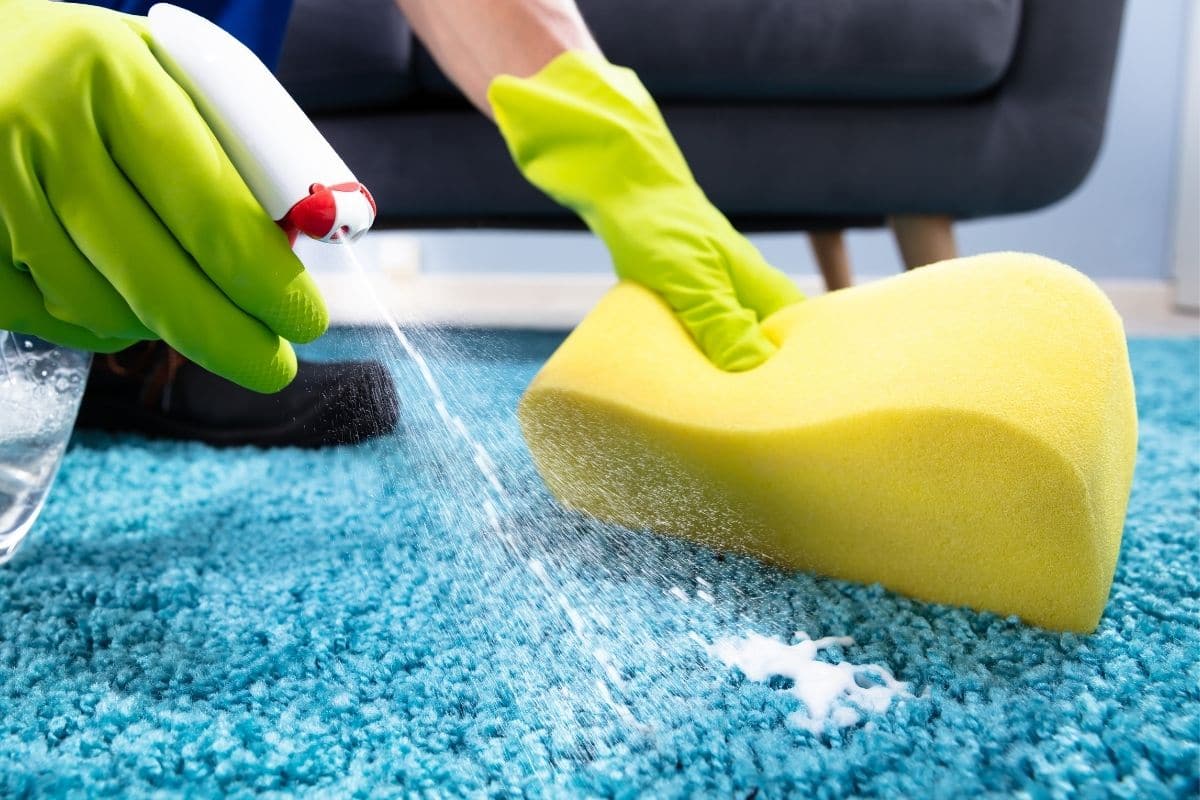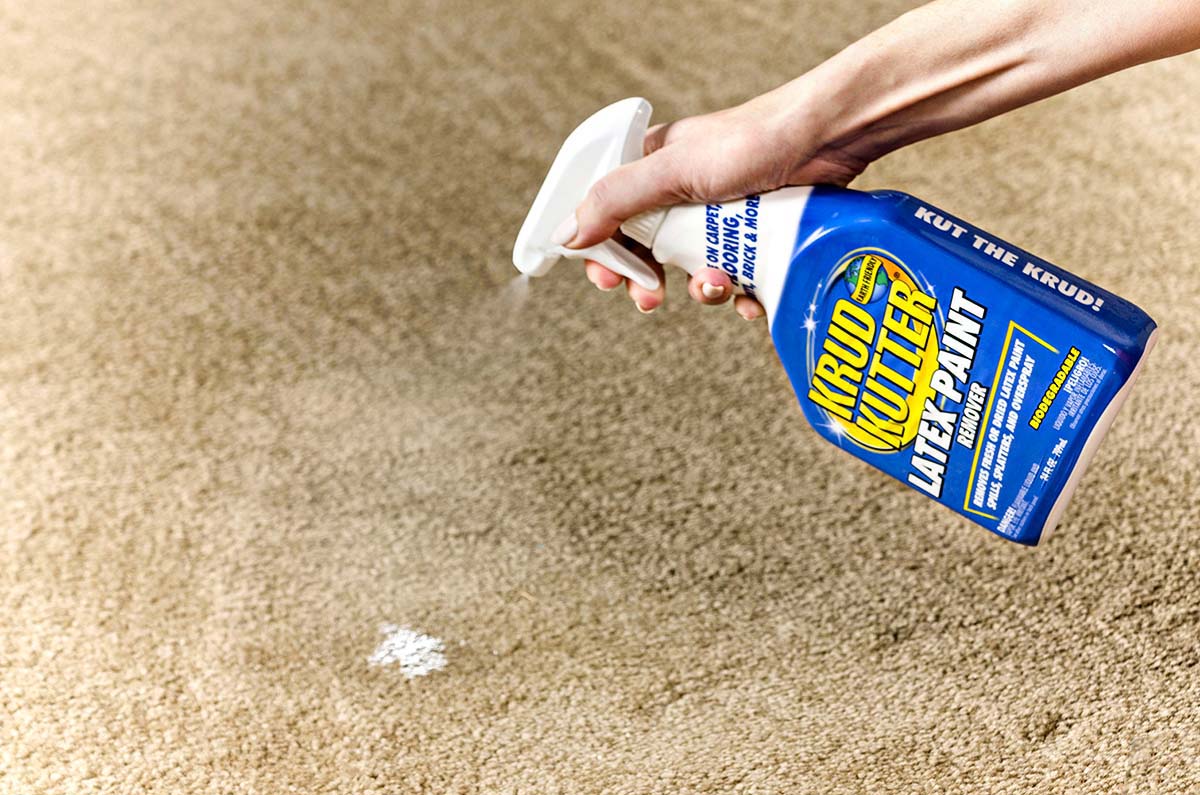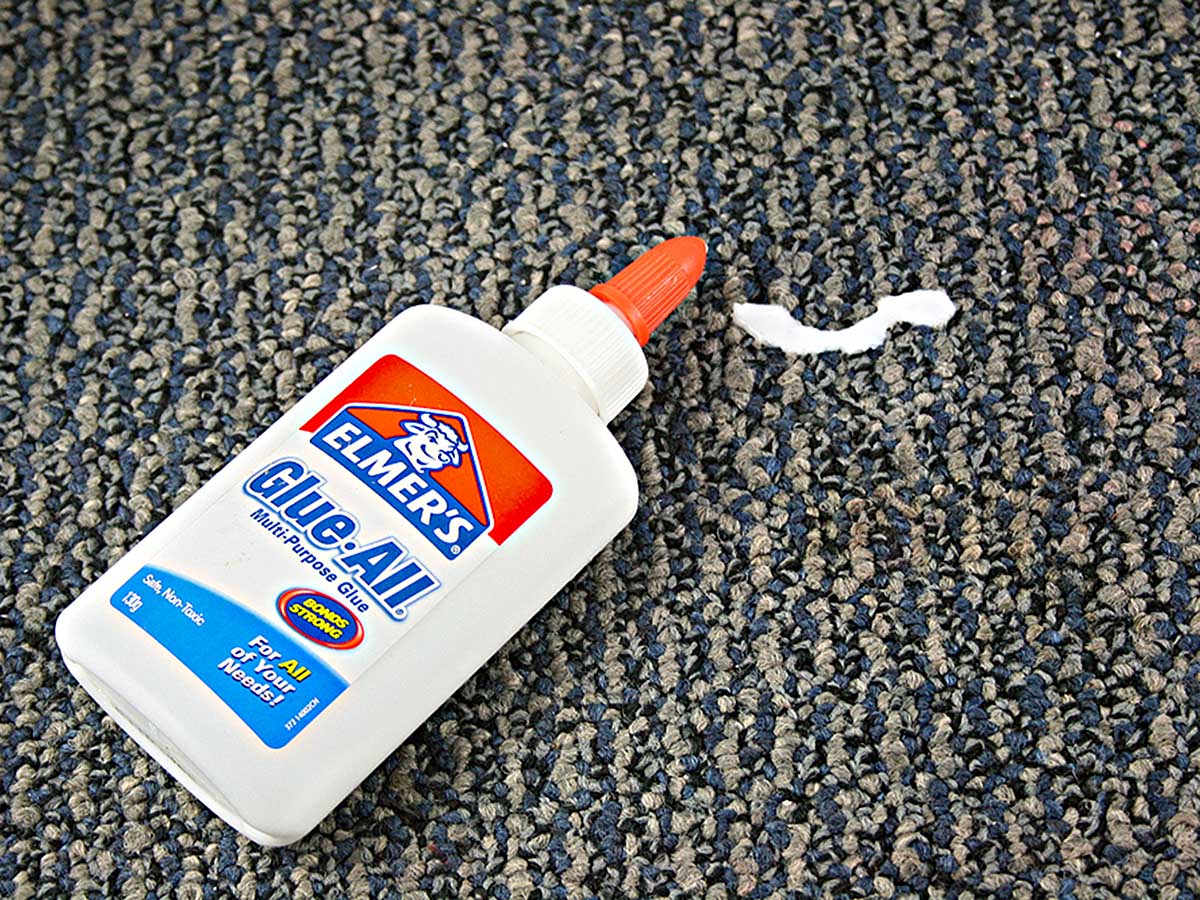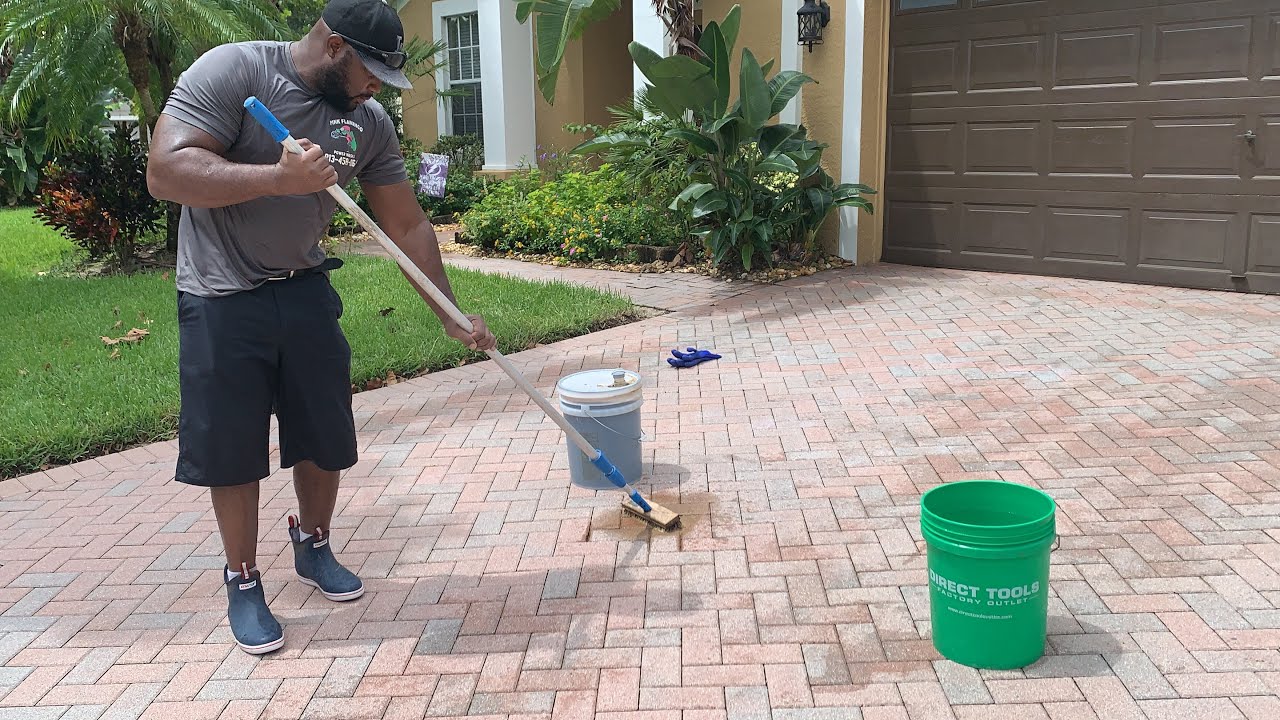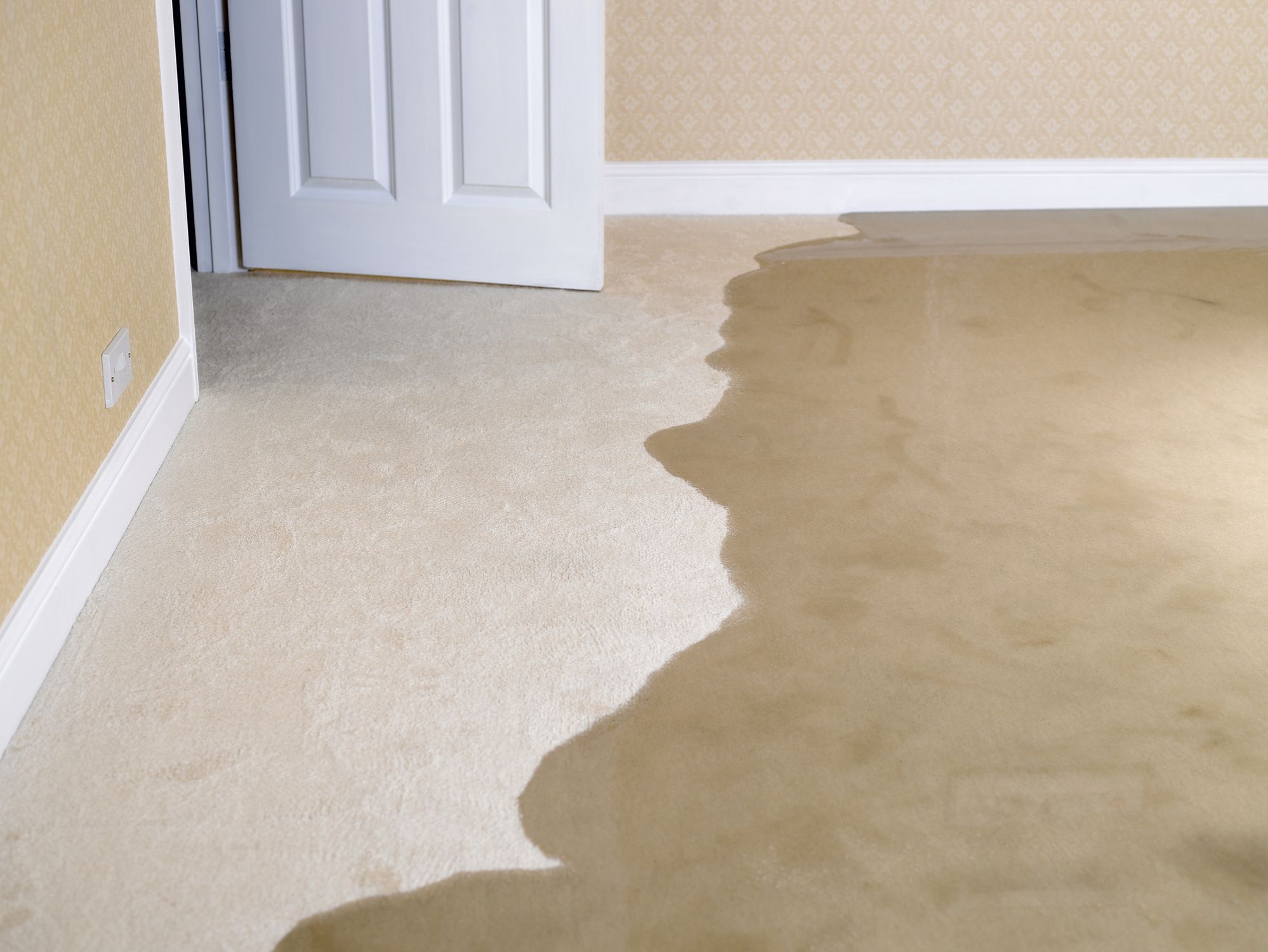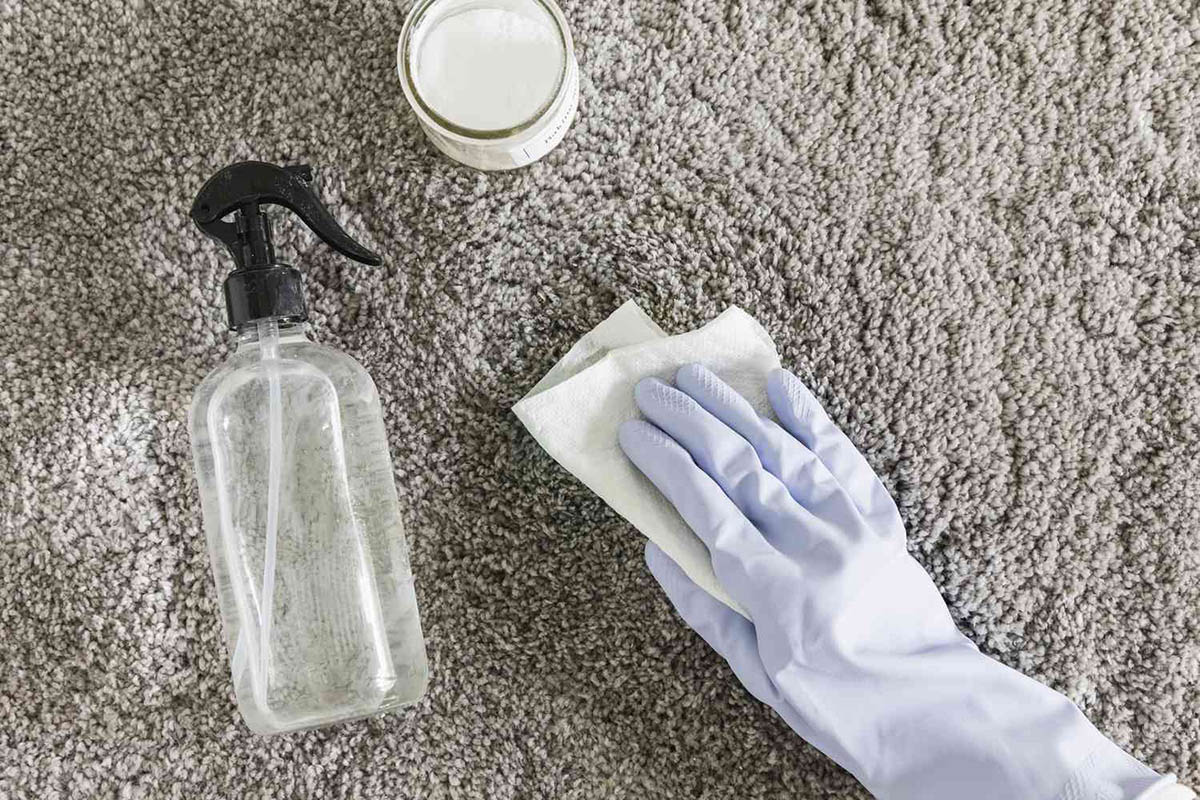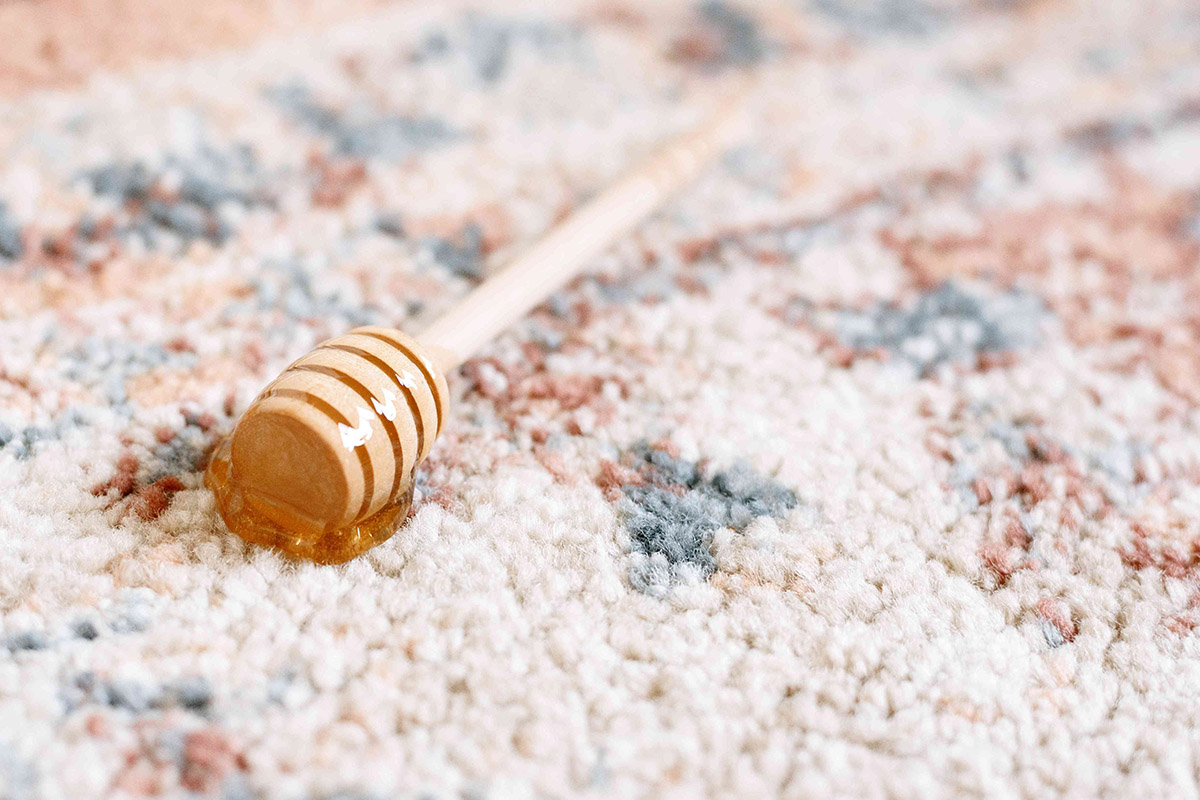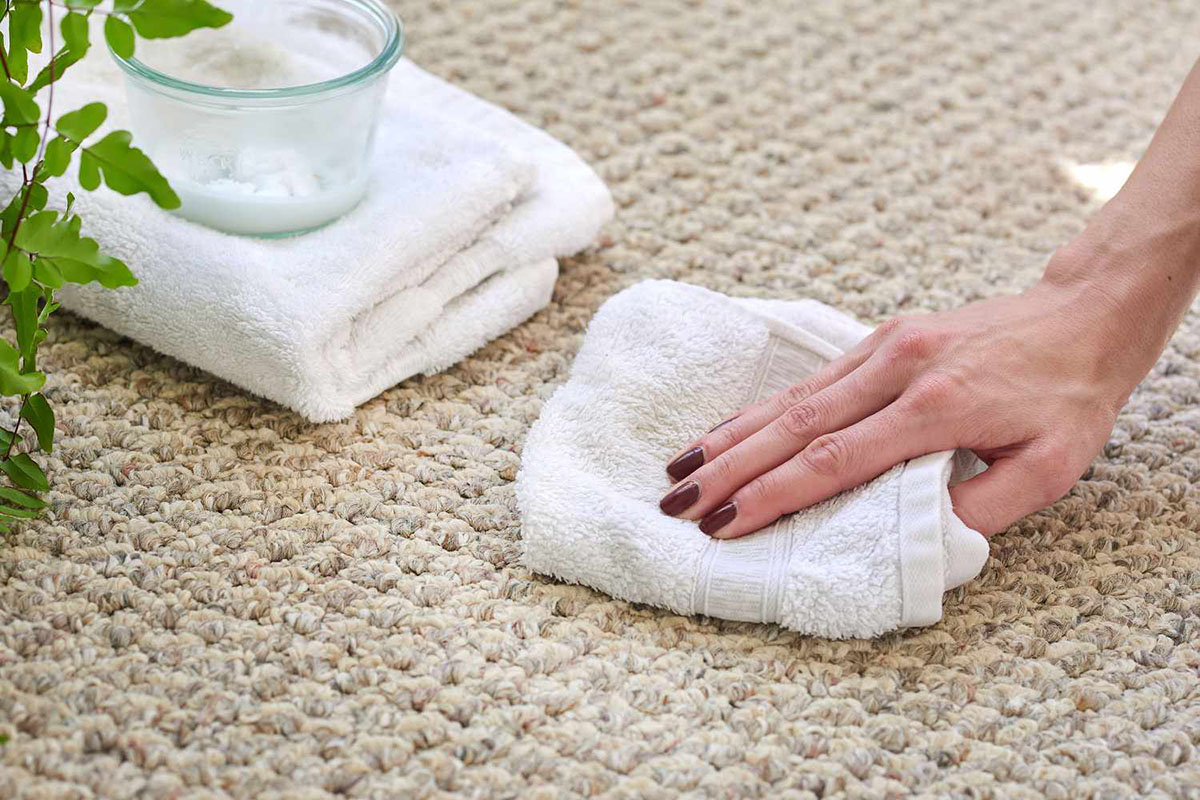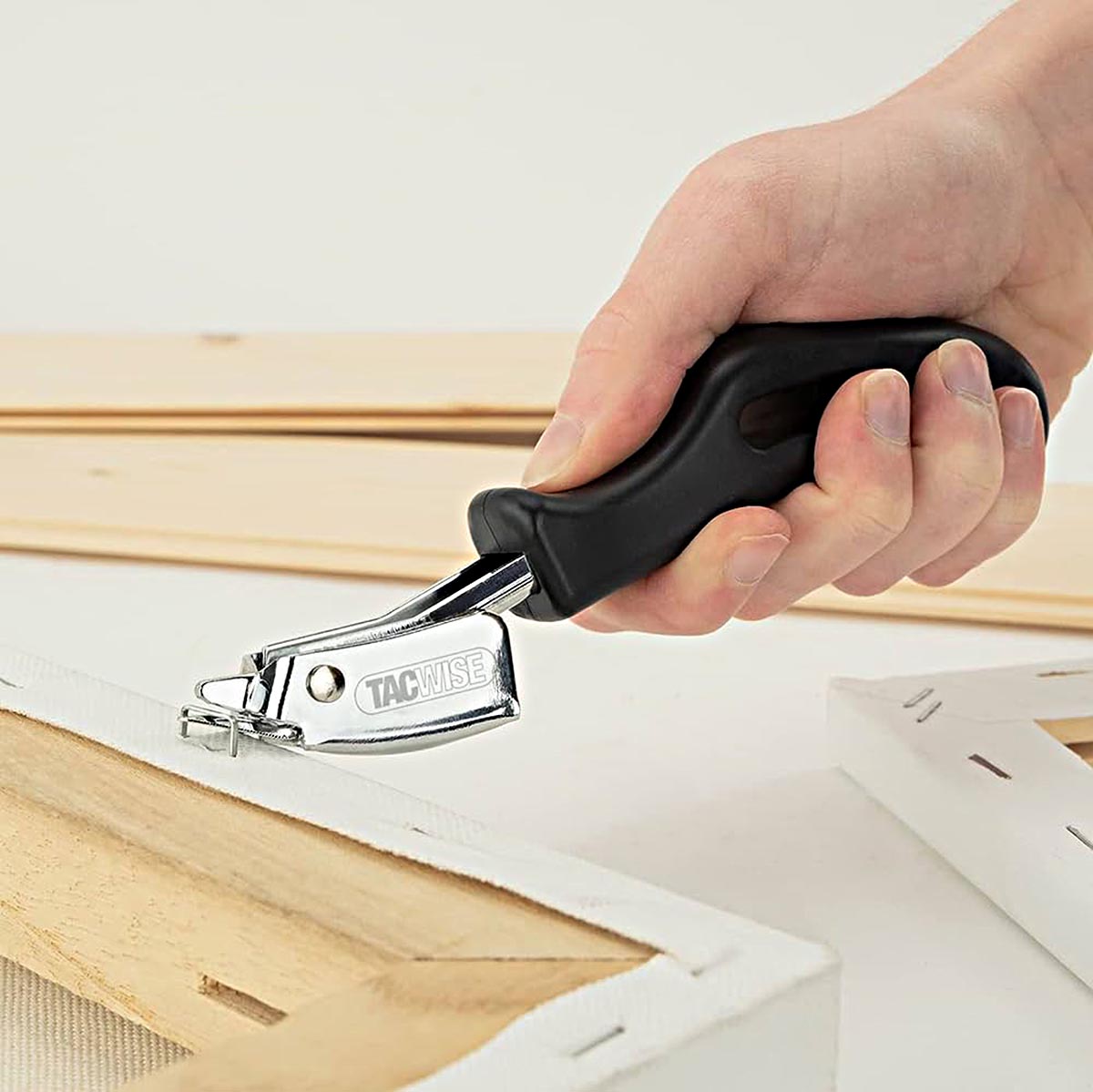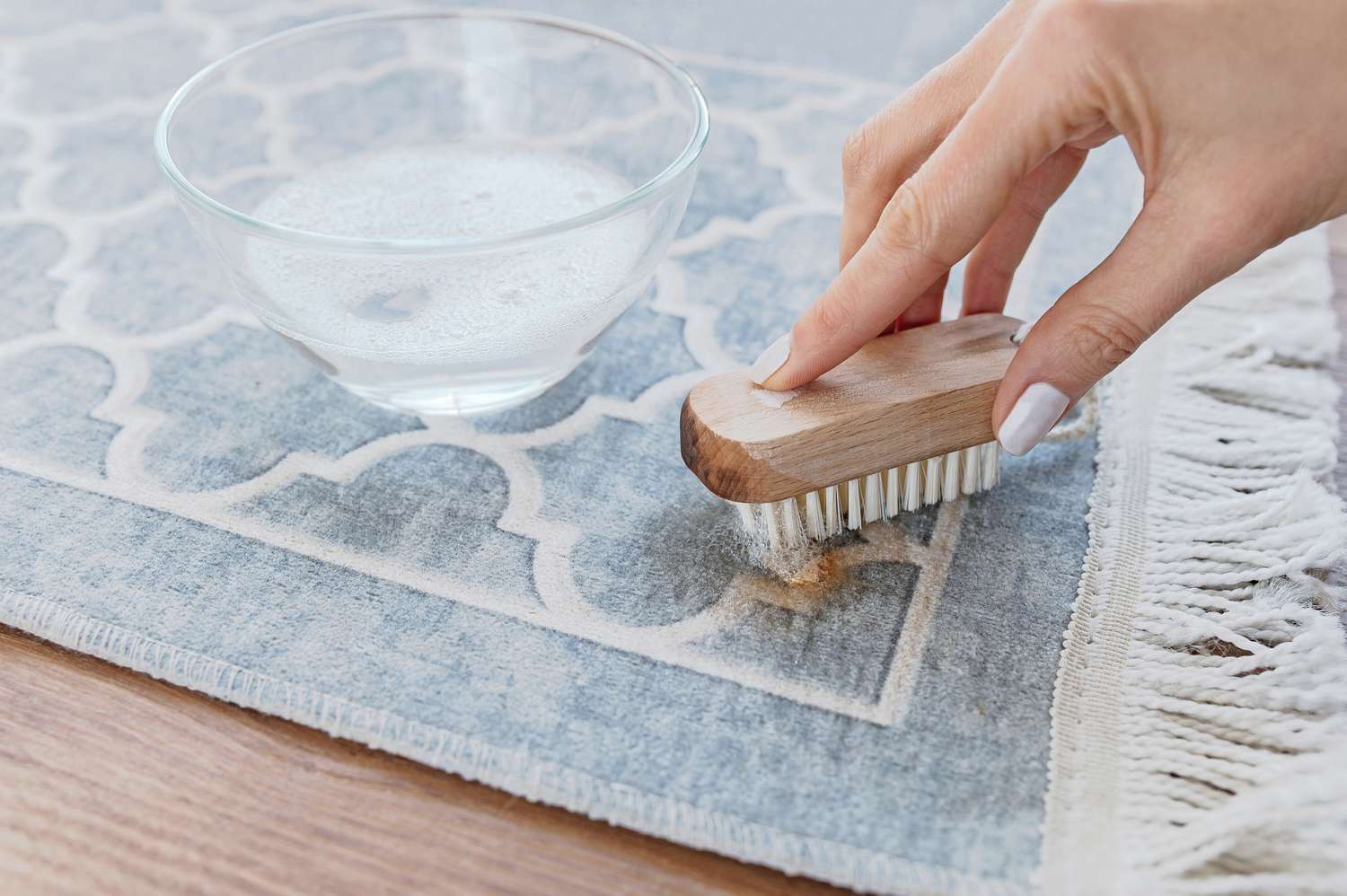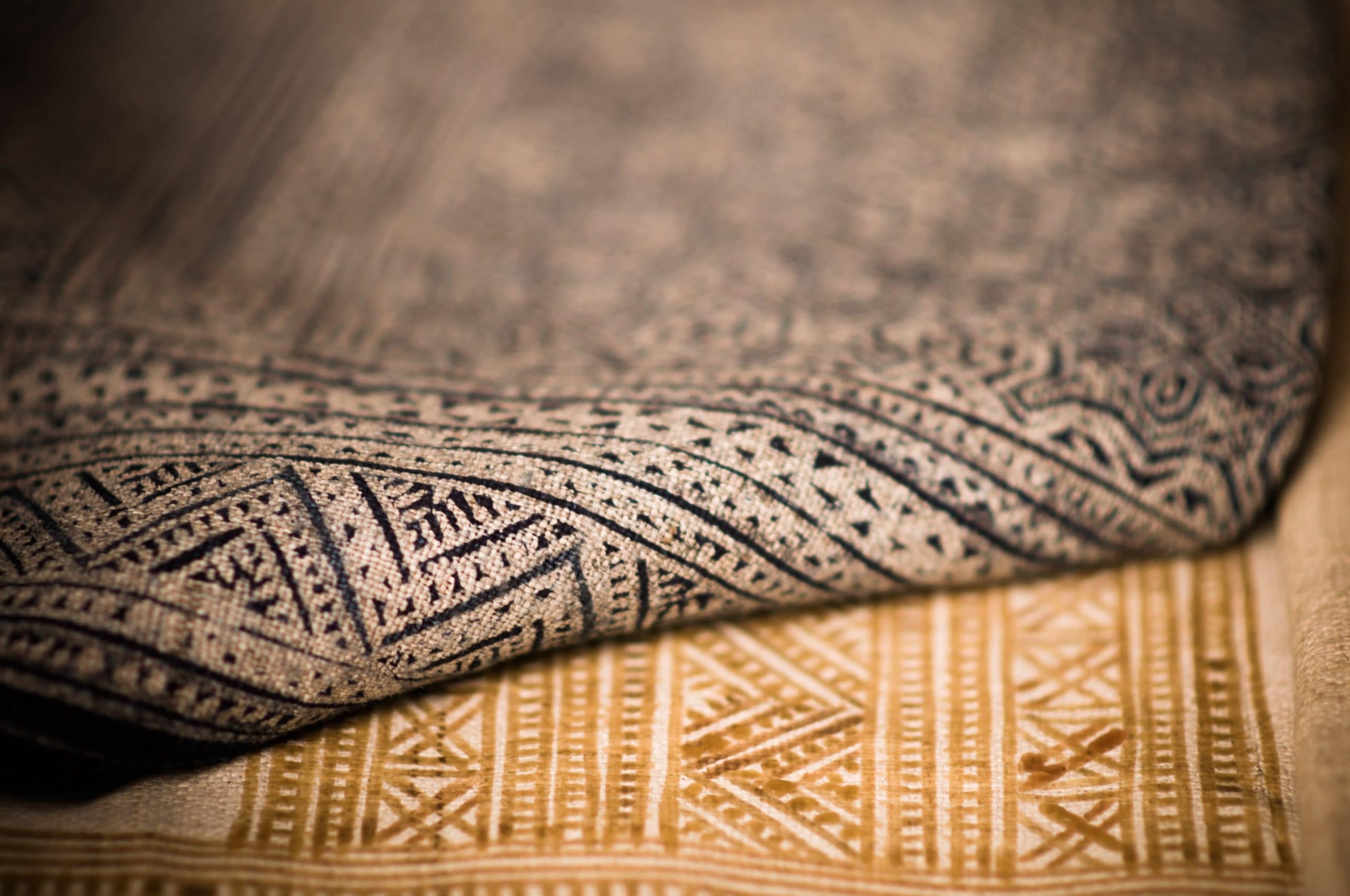

Articles
How To Get Dried Grease Out Of A Carpet
Modified: February 25, 2024
Learn how to effectively remove dried grease stains from your carpet with these articles.
(Many of the links in this article redirect to a specific reviewed product. Your purchase of these products through affiliate links helps to generate commission for Storables.com, at no extra cost. Learn more)
Introduction
Dealing with a dried grease stain on your carpet can be a frustrating and daunting task. Whether it’s from a cooking mishap or an accidental spill, getting that greasy residue out of your carpet requires some careful and strategic cleaning methods. In this article, we will explore various techniques and solutions to help you effectively remove dried grease stains from your carpet.
Before we dive into the steps on how to remove dried grease stains, it is helpful to understand the nature of these stains and why they can be so stubborn to remove. Grease is a type of oil-based substance that tends to adhere to surfaces and penetrate deep into fibers, making it challenging to remove with just ordinary cleaning methods.
Fortunately, with the right approach and a bit of patience, you can successfully eliminate dried grease stains and restore the cleanliness of your carpet. Let’s get started!
Key Takeaways:
- Tackling dried grease stains on your carpet requires patience and the right approach. From using household items like dish soap and baking soda to employing commercial grease removers and carpet cleaning machines, there are various effective methods to choose from.
- When dealing with dried grease stains, it’s crucial to act promptly, avoid aggressive scrubbing, and test cleaning solutions in inconspicuous areas. By following gentle cleaning techniques and taking necessary precautions, you can successfully bid farewell to stubborn grease stains and restore the pristine condition of your carpet.
Read more: How To Get Dry Milk Out Of A Carpet
Understanding Dried Grease Stains
Dried grease stains can be a nightmare to deal with if you don’t understand their composition and behavior. When grease spills onto your carpet, it seeps deep into the fibers, clinging to them tightly and hardening over time. This makes the stain more difficult to remove compared to fresh stains, as the grease has had a chance to solidify.
Grease stains commonly occur in areas where cooking or food preparation takes place, such as the kitchen or dining area. They can also be the result of accidental spills or mishaps during activities like crafting or automotive repair. Regardless of the cause, it’s important to address dried grease stains promptly to prevent them from becoming a permanent eyesore on your carpet.
It’s important to note that different types of grease can produce different challenges when it comes to removal. For example, animal fats and cooking oil can leave a yellowish stain that is more visible on lighter-colored carpets. For dark or oily grease stains, the appearance may be more evident, but they can still be successfully treated with the right techniques.
When it comes to removing dried grease stains, it’s important to avoid scrubbing or rubbing the stain vigorously. This can spread the stain further and push it deeper into the carpet fibers, making it even harder to remove. Instead, opt for gentle cleaning methods that allow for gradual and effective stain removal.
Now that we have a deeper understanding of dried grease stains, let’s move on to the preparation stage before tackling the stain head-on.
Preparing for Grease Stain Removal
Before you begin the process of removing a dried grease stain from your carpet, it’s essential to prepare the area and gather the necessary supplies. This preparation ensures a smoother and more effective stain removal process, saving you time and effort in the long run.
Here are a few steps to follow when preparing for grease stain removal:
- Blot the Stain: Start by blotting the dried grease stain gently with a clean white cloth or paper towel. This helps remove any loose or surface-level grease before applying cleaning solutions.
- Test in an Inconspicuous Area: Before using any cleaning solution or method on your carpet, it’s crucial to test it in a small, inconspicuous area first. This ensures that the solution does not discolor or damage your carpet fibers.
- Gather Cleaning Supplies: Make sure you have all the necessary cleaning supplies on hand. This may include dish soap, baking soda, vinegar, rubbing alcohol, a clean sponge or cloth, and a carpet cleaning machine if available.
- Ventilate the Area: Open windows or turn on fans to provide adequate ventilation while cleaning. This helps in the drying process and prevents any lingering odors.
- Remove Furniture: If the grease stain is in an area with furniture, such as a dining room or living room, it is best to move the furniture out of the way to have easy access to the stained area.
By following these preparation steps, you’ll be ready to tackle the dried grease stain using various cleaning methods. In the following sections, we will explore several effective techniques to remove dried grease stains from your carpet.
Method 1: Using Dish Soap and Water
Dish soap is a common household item that can be surprisingly effective in removing dried grease stains from carpets. Its grease-cutting properties make it an excellent option for tackling stubborn stains. Here’s how to use dish soap and water to remove a dried grease stain:
- Blot the Stain: Start by blotting the dried grease stain with a clean cloth or paper towel to remove any loose residue. Do not rub as this can spread the stain.
- Dilute the Dish Soap: In a small bowl, mix a few drops of dish soap with warm water. Avoid using too much soap, as excessive soap residue can be difficult to rinse out.
- Apply the Solution: Using a clean sponge or cloth, dip it into the soapy water solution and gently dab it onto the stain. Work from the outer edges of the stain towards the center to prevent spreading.
- Blot and Rinse: Continue blotting the stain with the soapy water solution, periodically rinsing your cloth or sponge in clean water to remove any accumulated grease. Blot with a dry cloth to absorb excess moisture.
- Repeat if Needed: If the stain persists, repeat the process of applying the soapy water solution and blotting until the stain is no longer visible. Be patient as it may take several attempts.
- Dry the Area: Once the stain is removed, use a clean, dry cloth to blot the treated area and remove any remaining moisture.
It’s important to note that when using dish soap, it is essential to use a mild, non-bleaching formula. Harsh detergents or bleach-containing dish soaps can potentially damage or discolor your carpet fibers. Always test the solution in an inconspicuous area before applying it to the stain.
Method 1 is a simple yet effective way to tackle dried grease stains on your carpet. If the stain persists or if you prefer to try alternative methods, continue reading to discover more techniques for removing dried grease stains.
Method 2: Applying Baking Soda and Vinegar
Baking soda and vinegar are two powerful ingredients that, when combined, create a natural cleaning solution that can effectively remove dried grease stains from your carpet. Here’s how to use baking soda and vinegar to tackle a stubborn grease stain:
- Blot the Stain: Start by blotting the dried grease stain with a clean cloth or paper towel to remove any loose residue. Avoid rubbing, as this can spread the stain further.
- Apply Baking Soda: Sprinkle a generous amount of baking soda directly onto the grease stain. Baking soda is known for its absorption properties and can help break down the grease.
- Spray Vinegar Solution: In a spray bottle, mix equal parts white vinegar and water. Spray the vinegar solution directly onto the baking soda. Allow the solution to bubble and fizz, indicating that it is actively working to break down the grease.
- Gently Scrub: Using a soft brush or sponge, gently scrub the stain in a circular motion. Be careful not to scrub too vigorously, as it might damage the carpet fibers.
- Blot and Rinse: Blot the area with a clean cloth or paper towel to absorb the moisture and lift the dissolved grease. Rinse the area by blotting with a cloth dampened in clean water.
- Dry the Area: After removing the stain, dry the area by blotting with a dry cloth or using a fan to prevent any moisture from being trapped in the carpet.
The combination of baking soda and vinegar creates a natural and eco-friendly cleaning solution that can effectively break down dried grease stains. However, it’s important to note that this method is best suited for synthetic carpets. Before applying the baking soda and vinegar mixture, ensure that your carpet material is compatible by testing it in an inconspicuous area.
If the baking soda and vinegar method doesn’t fully remove the grease stain, don’t worry. There are still other methods to try. In the next section, we will explore the use of commercial grease removers to tackle those stubborn stains.
Blot the area with a clean cloth to remove excess grease. Sprinkle baking soda or cornstarch on the stain, let it sit for 15 minutes, then vacuum. Repeat if necessary.
Read more: How To Get Dried Resin Out Of The Carpet
Method 3: Applying a Commercial Grease Remover
When it comes to tackling tough grease stains on your carpet, sometimes a commercial grease remover can be a highly effective solution. These specialized products are formulated to break down and dissolve grease, making the stain removal process easier. Here’s how to use a commercial grease remover:
- Read the Instructions: Before using any commercial grease remover, carefully read and follow the instructions provided by the manufacturer. Different products may have specific guidelines on application and usage.
- Blot the Stain: Start by blotting the dried grease stain with a clean cloth or paper towel to remove any loose residue. Avoid rubbing, as this may spread the stain further.
- Apply the Grease Remover: Following the instructions on the product, apply a small amount of the commercial grease remover directly onto the stained area. Use a clean cloth or sponge to work the product into the stained fibers.
- Allow Dwell Time: Leave the commercial grease remover on the stain for the recommended amount of time. This will allow the product to penetrate and break down the grease.
- Blot and Rinse: After the dwell time, blot the treated area with a clean cloth or paper towel to absorb the grease remover and dissolved grease. Rinse the area by blotting with a cloth dampened in clean water.
- Dry the Area: To complete the process, dry the area by blotting with a dry cloth or using a fan to prevent moisture buildup. This will also help prevent any potential damage or mildew growth.
Commercial grease removers can be highly effective in removing tough grease stains from carpets. However, it’s important to choose a product that is suitable for your specific carpet type and to test it in an inconspicuous area beforehand to ensure it doesn’t cause any discoloration or damage.
If you prefer to use a natural cleaning option, there are still other methods to explore. In the next section, we will discuss using rubbing alcohol as an alternative solution for dried grease stain removal.
Method 4: Using Rubbing Alcohol
Rubbing alcohol, also known as isopropyl alcohol, can be an effective alternative for removing dried grease stains from your carpet. Its solvent properties help break down the grease and make it easier to remove. Here’s how to use rubbing alcohol to tackle a grease stain:
- Blot the Stain: Begin by blotting the dried grease stain with a clean cloth or paper towel to remove any loose residue. Avoid rubbing, as this can spread the stain further.
- Dilute the Rubbing Alcohol: Dilute the rubbing alcohol with an equal amount of water. This helps prevent the alcohol from damaging or discoloring your carpet fibers.
- Apply the Solution: Pour the diluted rubbing alcohol onto a clean cloth or sponge and gently dab it onto the affected area. Work from the outer edges of the stain towards the center to prevent spreading.
- Gently Blot: Using a blotting motion, gently press the cloth or sponge onto the stain to transfer the grease onto the cloth. Avoid scrubbing vigorously, as this can damage the carpet fibers.
- Continue Blotting: Repeat the process of applying the rubbing alcohol solution and blotting until the stain is no longer visible. This may require several rounds of blotting, so be patient and persistent.
- Remove Excess Moisture: Once the stain is gone, blot the area with a clean, dry cloth to remove any excess moisture. This will help speed up the drying process.
Rubbing alcohol is a readily available option for removing dried grease stains, but it’s always important to test it in an inconspicuous area of your carpet first to ensure it’s safe to use. Additionally, use caution when handling rubbing alcohol, as it is flammable and should be kept away from open flames or sparks.
If the rubbing alcohol method doesn’t completely remove the grease stain, don’t worry. There is still one more method to explore. In the following section, we will discuss the option of utilizing a carpet cleaning machine to tackle stubborn grease stains.
Method 5: Employing a Carpet Cleaning Machine
If you’re dealing with a particularly stubborn dried grease stain on your carpet, employing a carpet cleaning machine can be a highly effective solution. These machines, commonly available for rent or purchase, use hot water extraction to deep clean your carpets. Here’s how to use a carpet cleaning machine to remove a dried grease stain:
- Prepare the Machine: Follow the manufacturer’s instructions for setting up and preparing the carpet cleaning machine. This may involve filling the water tank with hot water and adding the recommended carpet cleaning solution.
- Pre-Treat the Stain: Before starting the machine, pre-treat the dried grease stain with a grease-fighting carpet cleaning solution. Follow the instructions provided with the carpet cleaning solution for the best results.
- Operate the Machine: Turn on the carpet cleaning machine and slowly pass it over the stained area. Use the machine to evenly distribute the cleaning solution and agitate the carpet fibers to loosen the grease stain.
- Extract the Stain: Once the cleaning solution has been applied, use the extraction feature of the carpet cleaning machine to remove the solution and the dissolved grease from the carpet fibers. Repeat this process as needed.
- Rinse the Area: After the stain has been extracted, rinse the treated area with clean water using the carpet cleaning machine. This helps remove any remaining cleaning solution residue.
- Dry the Carpet: Once you have completed the cleaning process, allow the carpet to dry thoroughly. Use fans or open windows to promote air circulation and speed up the drying process.
Utilizing a carpet cleaning machine can be an efficient way to tackle dried grease stains as it allows for deep cleaning and extraction. However, it’s important to follow the instructions provided with the machine and to use a carpet cleaning solution that is specifically formulated for grease and oil stains. Additionally, always test the solution in an inconspicuous area to ensure the machine and cleaning solution are compatible with your carpet.
With the range of methods explored in this article, you now have several techniques to choose from in your quest to remove dried grease stains from your carpet. Remember to take appropriate precautions and choose the method that best suits your specific situation and carpet type. By doing so, you can restore the cleanliness and appearance of your carpet, leaving it fresh, spotless, and free of those stubborn grease stains.
Final Tips and Precautions
When dealing with dried grease stains on your carpet, it’s important to keep in mind some final tips and precautions to ensure a successful stain removal process. Here are some additional guidelines to follow:
- Act Quickly: The sooner you address a dried grease stain, the easier it will be to remove. Promptly blot the stain and begin the cleaning process as soon as possible to prevent it from setting further into the carpet fibers.
- Blot, Don’t Rub: Throughout the stain removal process, remember to blot the stain with a clean cloth or paper towel instead of rubbing. Rubbing can spread the stain and cause damage to the carpet fibers.
- Test in an Inconspicuous Area: Before applying any cleaning solution or method to the entire stain, test it in a small, inconspicuous area of your carpet to ensure it does not cause any discoloration or damage.
- Use Gentle Cleaning Techniques: Avoid aggressive scrubbing or harsh cleaning methods, as they can damage the carpet fibers. Instead, opt for gentle techniques that gradually and effectively remove the grease stain.
- Work From the Outside In: When applying cleaning solutions and working on the stain, start from the outer edges and move towards the center. This prevents the stain from spreading and becoming larger.
- Dry Thoroughly: After successfully removing the grease stain, make sure to dry the treated area thoroughly. Excess moisture can lead to mold growth or damage to your carpet, so use fans or open windows to facilitate the drying process.
- Know Your Carpet’s Limitations: Different types of carpets may have specific cleaning requirements. Check the manufacturer’s guidelines or consult a professional if you’re unsure about the appropriate cleaning methods for your specific carpet material.
By following these tips and taking the necessary precautions, you can maximize your chances of successfully removing dried grease stains from your carpet without causing any damage. Remember, if the stains persist or if you’re unsure about any step, don’t hesitate to seek professional assistance.
With determination, patience, and the right techniques at your disposal, you can restore the cleanliness and beauty of your carpet, bidding those stubborn dried grease stains a final farewell.
Read more: How To Get Dried Oil Stain Out Of A Carpet
Conclusion
Dealing with dried grease stains on your carpet can be a challenging task, but with the right techniques and a bit of patience, you can effectively remove them and restore the pristine condition of your carpet. Throughout this article, we’ve explored various methods for tackling dried grease stains, ranging from using simple household ingredients like dish soap and baking soda to employing commercial grease removers and carpet cleaning machines.
It’s important to start the stain removal process promptly, blotting the stain and preparing the area before applying any cleaning solution. Understanding the nature of dried grease stains and their behavior on carpets gives you the insight needed to choose the most appropriate cleaning method.
Whether you opt for the gentle approach of dish soap and water, the powerful combination of baking soda and vinegar, the concentrated power of commercial grease removers, the solvent properties of rubbing alcohol, or the deep cleaning capabilities of a carpet cleaning machine, be sure to follow the instructions carefully and take precautions to avoid damaging your carpet or spreading the stain further.
Remember, each carpet is unique, so it’s always advisable to test any cleaning solution or method in an inconspicuous area before applying it to the entire stain. Additionally, patience is key – it may take multiple attempts to fully remove a dried grease stain, particularly if it’s been sitting for a while.
By taking these steps and following the final tips and precautions provided, you can effectively remove dried grease stains from your carpet and ensure it remains clean and beautiful. Don’t hesitate to seek professional assistance if needed, especially for older or particularly stubborn stains.
With the knowledge and techniques shared in this article, you are armed with the tools to conquer dried grease stains and maintain the longevity and appearance of your carpet. Embrace the challenge, apply the methods that best suit your situation, and breathe new life into your carpet, making it a spotless and inviting part of your home once again.
Frequently Asked Questions about How To Get Dried Grease Out Of A Carpet
Was this page helpful?
At Storables.com, we guarantee accurate and reliable information. Our content, validated by Expert Board Contributors, is crafted following stringent Editorial Policies. We're committed to providing you with well-researched, expert-backed insights for all your informational needs.

